After years of buying store-bought chipotle peppers in adobo sauce, I finally perfected my own homemade version that puts the jarred stuff to shame! This rich, smoky adobo sauce is incredibly easy to make with simple pantry ingredients and adds incredible depth to any Mexican or Tex-Mex dish.
The first time I made this sauce, my whole family raved about how our tacos, burritos, and enchiladas suddenly tasted like authentic restaurant quality. The best part? You can control exactly what goes into it and adjust the heat to your preference.
This adobo sauce recipe takes just 30 minutes from start to finish, and the results will transform your cooking forever.
Jump to:
Why You'll Love This Recipe
This authentic homemade adobo sauce will transform your Mexican and Tex-Mex cooking with its rich, smoky depth of flavor that store-bought versions simply can't match. You'll love this recipe because:
- It uses simple pantry ingredients and spices you likely already have
- The flavor is infinitely better than any pre-made sauce you can buy
- It's versatile and can be used in countless dishes from marinades to soups
- You can control the heat level and customize it to your preferences
- It stores beautifully, allowing you to have fresh adobo sauce on hand whenever inspiration strikes
- The recipe is straightforward with clear, easy-to-follow steps
Ingredients
I've carefully selected these ingredients to create the perfect balance of smoky, sweet, tangy, and savory flavors that make authentic adobo sauce so special. The ancho chili powder provides that classic earthy base, while Roma tomatoes add natural sweetness and body.
Apple cider vinegar brings the essential tang, and the blend of spices (cumin, cinnamon, oregano, and allspice) creates that complex flavor profile you just can't get from a jar.
Each ingredient plays a crucial role in developing the deep, rich character that makes this sauce so irresistible!
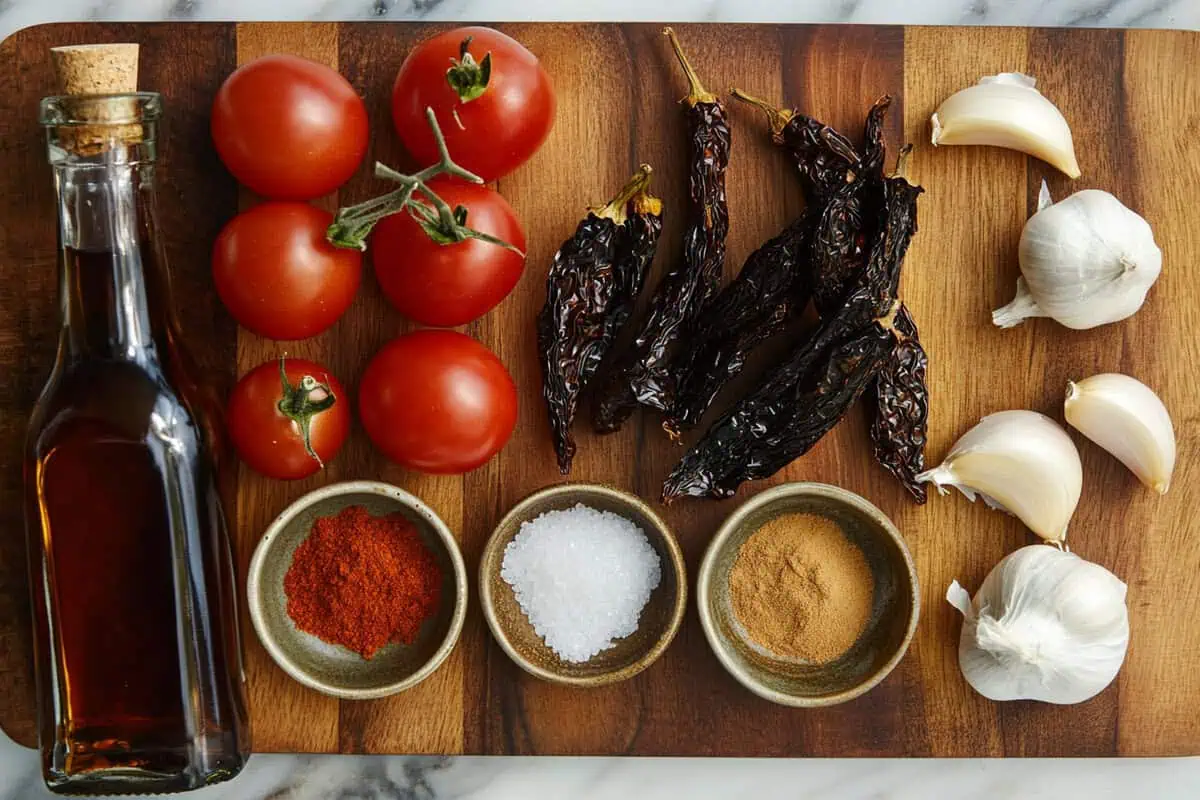
- 1½ cups boiling water
- ½ cup chili powder (47g) - ancho chili powder recommended
- 2 Roma (plum) tomatoes, chopped (8 oz with juices)
- ¼ cup cider vinegar (5%)
- 3 cloves garlic
- 2 tablespoon brown sugar or Mexican piloncillo
- 1 teaspoon oregano (Mexican oregano preferred)
- ½ teaspoon kosher salt
- ½ teaspoon ground cumin
- ¼ teaspoon cinnamon
- ¼ teaspoon black pepper
- ¼ teaspoon allspice
- 3 tablespoon olive oil
Equipment
- Food processor or blender
- Medium saucepan or Dutch oven
- Measuring cups and spoons
- Knife and cutting board
- Wooden spoon for stirring
- Airtight container for storage
- Canning equipment (optional, if preserving)
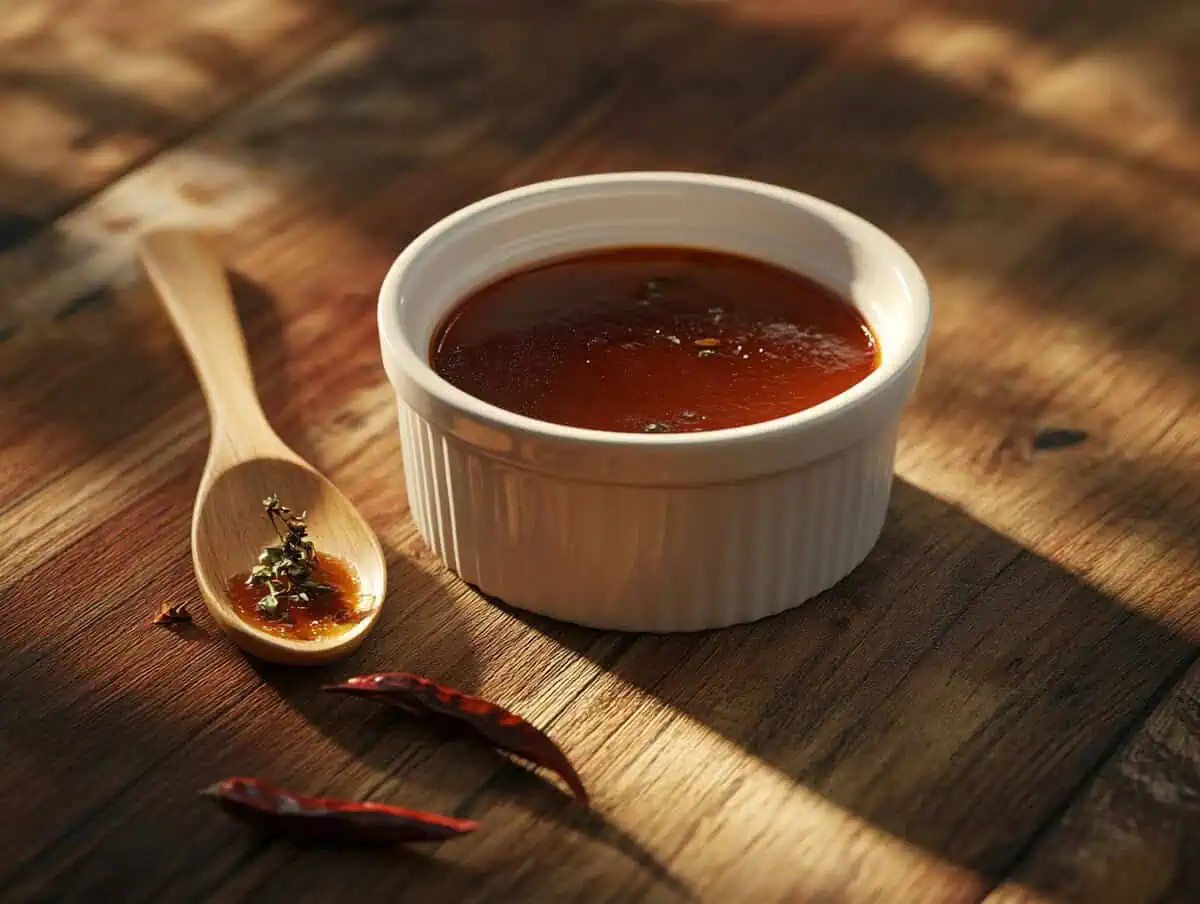
How To Make
- In a food processor or blender, add the chile powder and carefully pour in 1½ cups boiling water. Cover with lid to steep while you gather the other ingredients.
- Add the vinegar, tomatoes, garlic, brown sugar, oregano, salt, cumin, cinnamon, pepper, and allspice to the food processor or blender and process to a smooth purée, about the consistency of BBQ sauce or ketchup. If needed, thin with water.
- Heat oil in a skillet or Dutch oven over medium-high heat. Carefully pour in the chili vegetable purée and bring to a boil, reduce to simmer and cook for 20 minutes uncovered.
- Once finished, allow to cool before transferring to an airtight container.
For Making Chipotle Peppers in Adobo Sauce
If Using Dried Chipotle Peppers:
- Bend and slightly crack the dried chipotle peppers (or make punctures all over with a knife). Add to a saucepan and just cover with water.
- Bring to a boil, reduce to simmer and cook for 30 minutes. Be sure to add more water if needed so they don't dry and burn.
- Set aside to cool, then drain and add to Adobo Sauce after it has finished simmering.
- Simmer the peppers in the Adobo Sauce for another 10 minutes.
If Using Freshly Smoked Chipotle Peppers (not dried yet):
- Add freshly smoked peppers directly to the Adobo Sauce after it has finished simmering.
- Simmer in Adobo Sauce for another 10 minutes.

Tips from Lola's Kitchen
- For authentic flavor: Use ancho chili powder instead of regular chili powder. The deeper, smoky flavor makes a significant difference.
- Adjust the heat level: Add a few dried chipotle chiles or guajillo chiles to the initial blend if you want to increase the heat and complexity.
- Balance the flavors: If your sauce is too spicy, add a bit more brown sugar. If it's too sweet, a splash more vinegar will balance it out.
- Perfect consistency: The sauce should coat the back of a spoon - if it's too thick, add water a tablespoon at a time; if too thin, simmer longer to reduce.
- Quality matters: Use fresh spices for the best flavor – ground spices lose potency over time.
- Make ahead: This sauce actually improves with time as the flavors meld, so consider making it a day before you need it.
Substitutions
- Chili Powder: If you can't find ancho chili powder, use regular chili powder and add 1 teaspoon of smoked paprika for depth.
- Vinegar: Apple cider vinegar can be replaced with white vinegar or even red wine vinegar.
- Brown Sugar: Substitute with honey, maple syrup, or even regular white sugar if needed.
- Mexican Oregano: Mediterranean oregano can work, but add a tiny pinch of marjoram and a bit of citrus zest to approximate the flavor.
- Tomatoes: Canned diced tomatoes (drained) can substitute for fresh Roma tomatoes.
- Piloncillo: If you can't find this Mexican cone sugar, dark brown sugar works well.
Troubleshooting
- Sauce is too thin: Continue simmering uncovered to reduce further, or add 1 teaspoon of cornstarch mixed with 1 tablespoon cold water.
- Sauce is too thick: Add water, chicken stock, or vegetable broth a tablespoon at a time until desired consistency is reached.
- Too spicy: Add more tomatoes and a bit of extra sugar to tone down the heat.
- Not spicy enough: Add a pinch of cayenne pepper or a few drops of your favorite hot sauce.
- Sauce is bitter: Add a bit more sugar and a small pinch of salt to balance the flavors.
- Lumpy texture: Return the sauce to the blender and process until smooth.
Storage & Reheating
- Refrigerator: Store in an airtight container in the refrigerator for up to 4 weeks.
- Freezing: Portion into ice cube trays, freeze, then transfer frozen cubes to a freezer bag. Will keep for up to 6 months.
- Canning: For long-term storage, follow proper canning procedures (see full canning instructions below).
- Reheating: Warm gently on the stovetop over low heat, stirring occasionally, or microwave in short intervals, stirring between each.
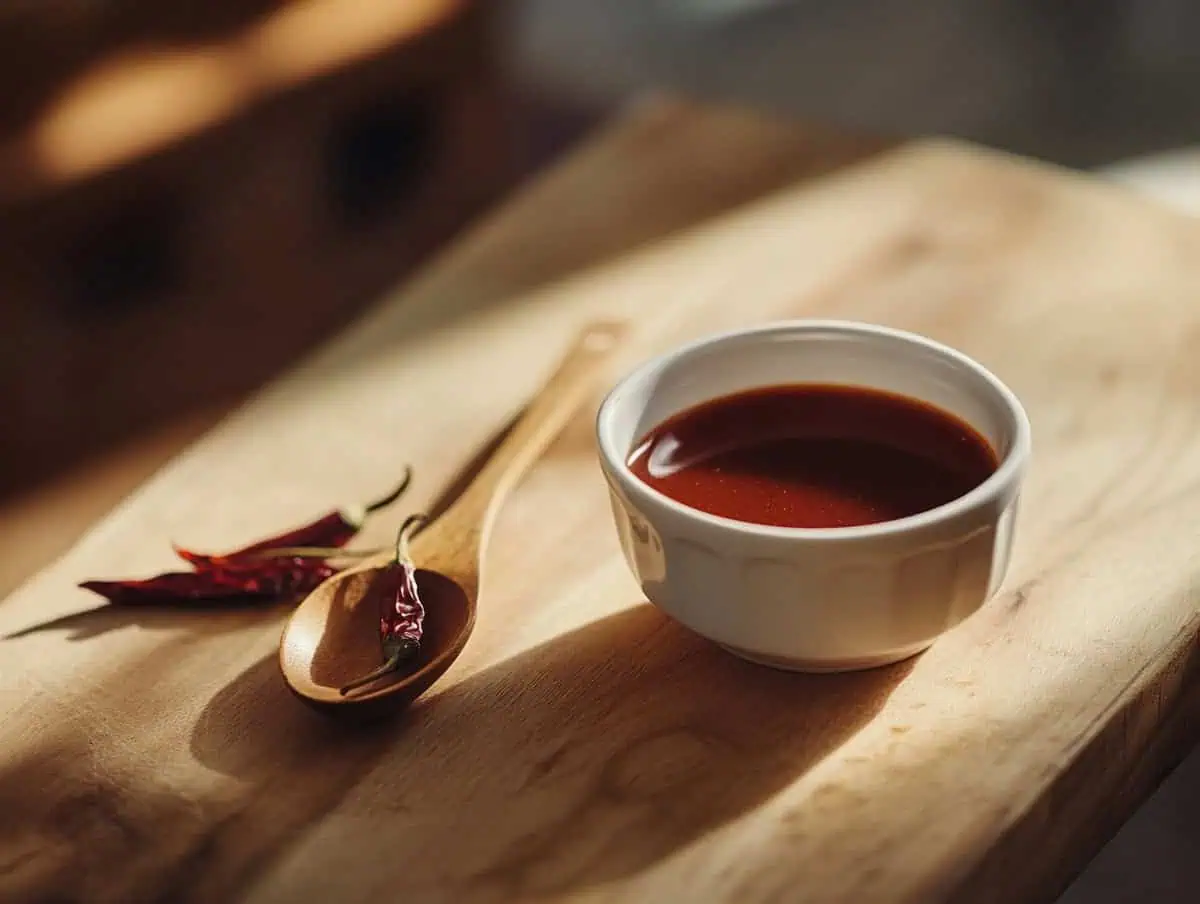
FAQ
What exactly is adobo sauce?
Adobo sauce is a rich, flavorful Mexican sauce made from chili powder, vinegar, sugar, garlic and herbs. It was originally used to preserve and flavor meats but is now used in many Mexican and Tex-Mex dishes.
Is adobo sauce spicy?
It has a moderate level of heat, but it's more about flavor than spice. You can easily adjust the heat level by changing the type or amount of chili powder used.
What's the difference between Mexican and Filipino adobo?
They're entirely different! Mexican adobo is this sauce recipe, while Filipino adobo is a cooking method using vinegar, soy sauce, and garlic to marinate and cook meat.
How long does homemade adobo sauce last?
When stored properly in the refrigerator, it will last up to 4 weeks. If canned or frozen, it can last much longer.
Can I use this sauce right away or does it need to rest?
You can use it immediately, but the flavors develop and meld better if you let it rest at least overnight.
What's the difference between chipotle peppers and adobo sauce?
Chipotle peppers are dried, smoked jalapeños. Adobo sauce is the flavorful sauce they're often packed in. Together they're called "chipotle peppers in adobo sauce."
Can I make this sauce mild for kids?
Absolutely! Use a milder chili powder and make sure to remove all seeds from the peppers for a family-friendly version.
Is adobo sauce gluten-free?
Yes, this homemade version contains no gluten ingredients. Always check individual spice blends to ensure they haven't been processed with gluten-containing ingredients if you have celiac disease.
Related
Looking for other recipes like this? Try these:

Homemade Adobo Sauce Recipe
Ingredients
- 1½ cups boiling water
- ½ cup chili powder 47g - ancho chili powder recommended
- 2 Roma plum tomatoes, chopped (8 oz with juices)
- ¼ cup cider vinegar 5%
- 3 cloves garlic
- 2 tablespoon brown sugar or Mexican piloncillo
- 1 teaspoon oregano Mexican oregano preferred
- ½ teaspoon kosher salt
- ½ teaspoon ground cumin
- ¼ teaspoon cinnamon
- ¼ teaspoon black pepper
- ¼ teaspoon allspice
- 3 tablespoon olive oil
Instructions
- In a food processor or blender, add the chile powder and carefully pour in 1½ cups boiling water. Cover with lid to steep while you gather the other ingredients.
- Add the vinegar, tomatoes, garlic, brown sugar, oregano, salt, cumin, cinnamon, pepper, and allspice to the food processor or blender and process to a smooth purée, about the consistency of BBQ sauce or ketchup. If needed, thin with water.
- Heat oil in a skillet or Dutch oven over medium-high heat. Carefully pour in the chili vegetable purée and bring to a boil, reduce to simmer and cook for 20 minutes uncovered.
- Once finished, allow to cool before transferring to an airtight container.
For Making Chipotle Peppers in Adobo Sauce
If Using Dried Chipotle Peppers:
- Bend and slightly crack the dried chipotle peppers (or make punctures all over with a knife). Add to a saucepan and just cover with water.
- Bring to a boil, reduce to simmer and cook for 30 minutes. Be sure to add more water if needed so they don't dry and burn.
- Set aside to cool, then drain and add to Adobo Sauce after it has finished simmering.
- Simmer the peppers in the Adobo Sauce for another 10 minutes.
If Using Freshly Smoked Chipotle Peppers (not dried yet):
- Add freshly smoked peppers directly to the Adobo Sauce after it has finished simmering.
- Simmer in Adobo Sauce for another 10 minutes.
Tips from Lola's Kitchen
- For authentic flavor: Use ancho chili powder instead of regular chili powder. The deeper, smoky flavor makes a significant difference.
- Adjust the heat level: Add a few dried chipotle chiles or guajillo chiles to the initial blend if you want to increase the heat and complexity.
- Balance the flavors: If your sauce is too spicy, add a bit more brown sugar. If it's too sweet, a splash more vinegar will balance it out.
- Perfect consistency: The sauce should coat the back of a spoon - if it's too thick, add water a tablespoon at a time; if too thin, simmer longer to reduce.
- Quality matters: Use fresh spices for the best flavor – ground spices lose potency over time.
- Make ahead: This sauce actually improves with time as the flavors meld, so consider making it a day before you need it.
The Story Behind Adobo Sauce
Adobo sauce has a fascinating history that dates back to pre-Hispanic Mexico and the early Spanish colonial period. The word "adobo" comes from the Spanish word "adobar," which means to marinate or season. When Spanish colonizers arrived in Mexico in the 16th century, they encountered indigenous preservation methods that used chile peppers, herbs, and salt. The Spanish incorporated these techniques with their own traditional methods that used vinegar and spices, creating what we now know as adobo sauce.
Originally, adobo sauce was primarily used as a preservative for meat in the days before refrigeration. The combination of vinegar, spices, and chiles created an environment that inhibited bacterial growth while simultaneously infusing the meat with incredible flavor. Mexican cooks would submerge meats in this flavorful concoction, allowing them to be stored longer while developing complex taste profiles.
What makes traditional Mexican adobo sauce distinctive is its use of native ingredients like ancho and guajillo chiles. These dried chiles provide not just heat but also earthy, fruity, and smoky notes that form the backbone of authentic Mexican cuisine. Over generations, regional variations developed across Mexico, with families passing down their own special recipes and techniques.
Today, adobo sauce is most commonly associated with chipotle peppers – smoked and dried jalapeños that are rehydrated and preserved in the sauce. This combination creates that distinctive smoky-spicy flavor profile we've come to love in many Mexican and Tex-Mex dishes. From enchiladas and tacos to marinades for grilled meats, adobo sauce has become an essential ingredient in kitchens around the world.
Making adobo sauce from scratch connects us to this rich culinary tradition while allowing us to experience flavors that simply can't be replicated by mass-produced versions. Each time I make this recipe, I'm reminded of how something so simple – a combination of chiles, spices, and vinegar – has stood the test of time and continues to bring incredible flavor to our tables today.
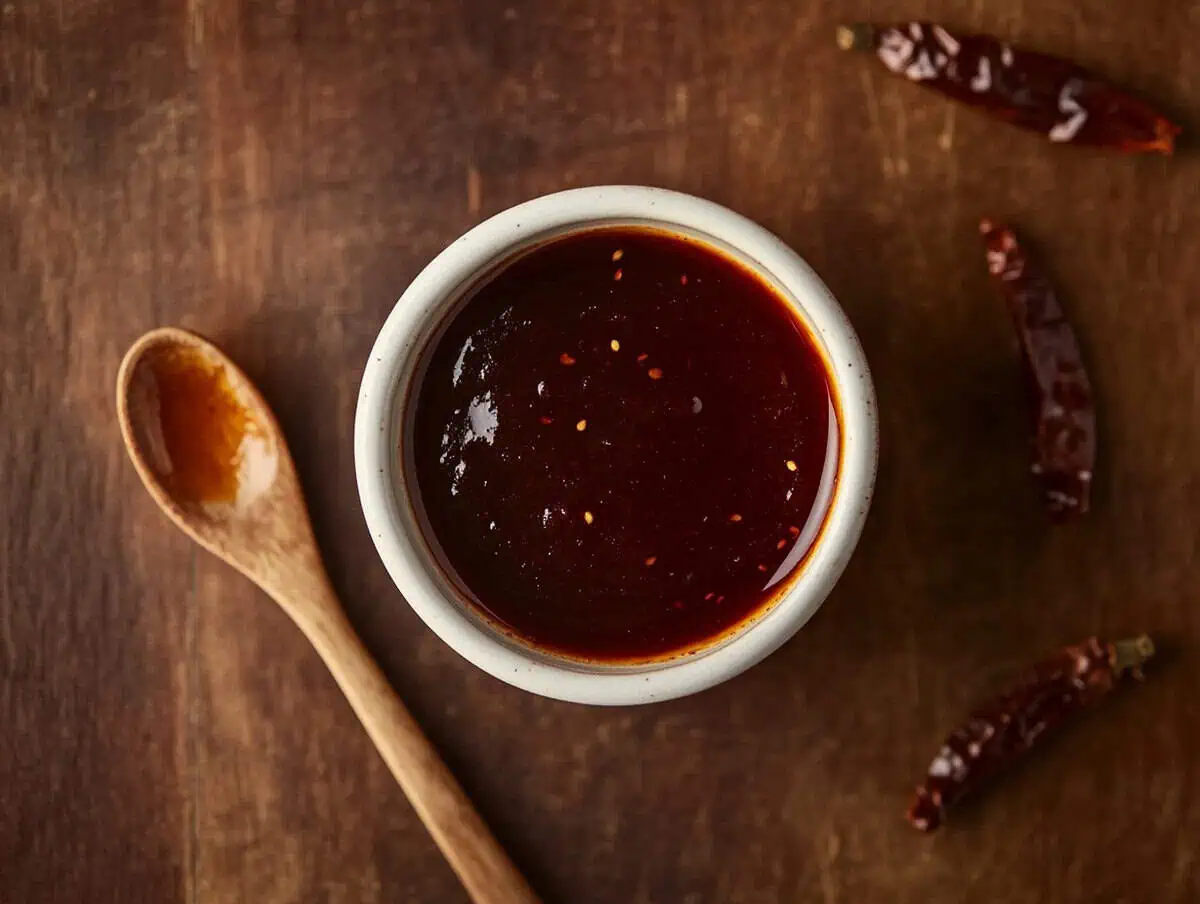





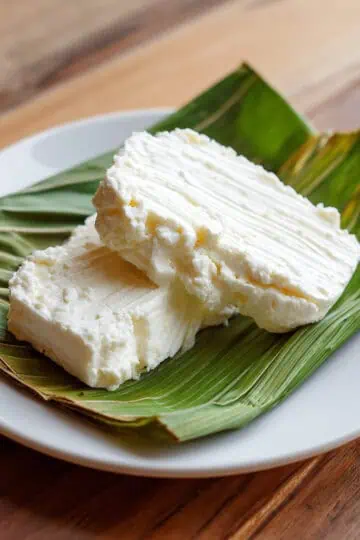
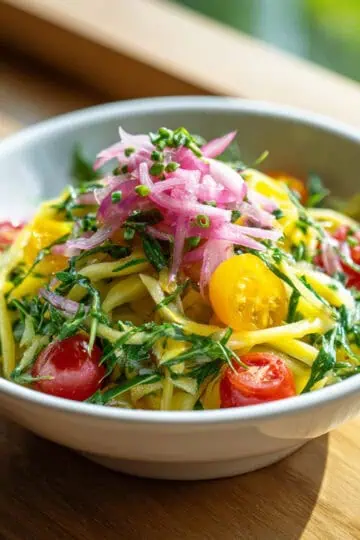
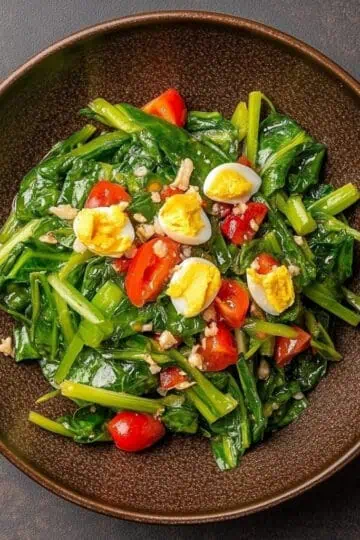

Comments
No Comments